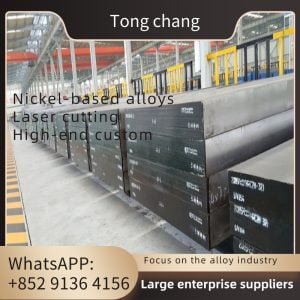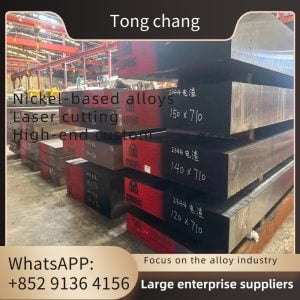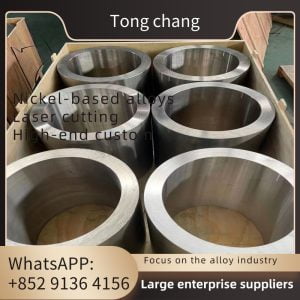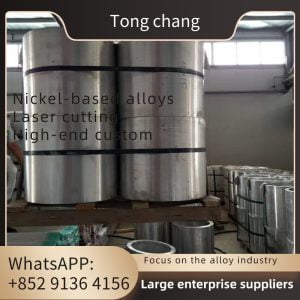| Product Name: | Nickel Alloy Seamless Tube | Characteristic: | High Temperature Alloy |
|---|---|---|---|
| Standard: | GB | Material: | GH3030 (80Ni20Cr) |
| End: | Plain Ends / Beveled Ends | Type: | Seamless |
| Technique: | Cold Drawn | Application: | Classification And Designation For Superalloys And High Temperature Intermetallic Materials |
| High Light: | high temperature alloy steel seamless tube, gh3030 alloy steel seamless tube, 80ni20cr nickel seamless tube | ||
High Temperature Alloy GH3030 (80Ni20Cr) GB/T15062 Nickel Alloy Steel Seamless Tube
The high quality China GB GH3030 material, as well as GB GB/T 14992 (2005) , GB GB/T 14994 (2008) , GB GB/T 14995 (2010) , GB GB/T 14996 (2010) , GB GB/T 14998 (1994) , GB GB/T 15062 (2008) ,Classification and designation for superalloys and high temperature intermetallic materials.
| Standard | GB |
| Material | GH3030 (GH 30) |
| Equivalent Material | ЗИ435,XH78T |
Chemistry Composition of Grade GH3030
C | Cr | Ni | Ti | Al | Fe | Mn | Si | P | S |
≤0.12 | 19.0~22.0 | Balance | 0.15~0.35 | ≤0.15 | ≤1.5 | ≤0.7 | ≤0.8 | ≤0.03 | ≤0.02 |
Mechanical Properties of Grade GH3030
Yield Rp0.2, Mpa | Tensile Rm, MPa | Impact KV/Ku, J | Elongation, A% | Reduction in cross section on fracture,Z% | As-Heat-Treated Condition | Brinell hardness, HBW |
963 (≥) | 953 (≥) | 33 | 23 | 33 | Solution and Aging, Annealing, Ausaging, Q +T, etc | 424 |
Physical Properties of Grade GH3030
Temperature (℃) | Modulus of elasticity (GPa) | Mean coefficient of thermal expansion 10-6/(℃) between 20(℃) and | Thermal conductivity (W/m·℃) | Specific thermal capacity (J/kg·℃) | Specific electrical resistivity (Ωmm²/m) | Density (kg/dm³) | Poisson's coefficient |
| 21 | – | – | 0.23 | – | |||
| 984 | 459 | – | 13.3 | 311 | – | ||
| 996 | – | 34 | 44.2 | 223 | 123 |
Heat Treatment of Steel Grade GH3030
Heat treated : 1966℃ – 1948 ℃
Technological Curves of Grade GH3030
No Curve
Process performance
1. The alloy has good malleability, forging heating temperature 1180℃, final forging 900℃.
2. The average size of the grain size of the alloy is closely related to the degree of deformation of the forging, final forging temperature.
3. After heat treatment, parts surface oxidation skin can be blown sand or acid cleaning method to delete.
Application
Classification and designation for superalloys and high temperature intermetallic materials








